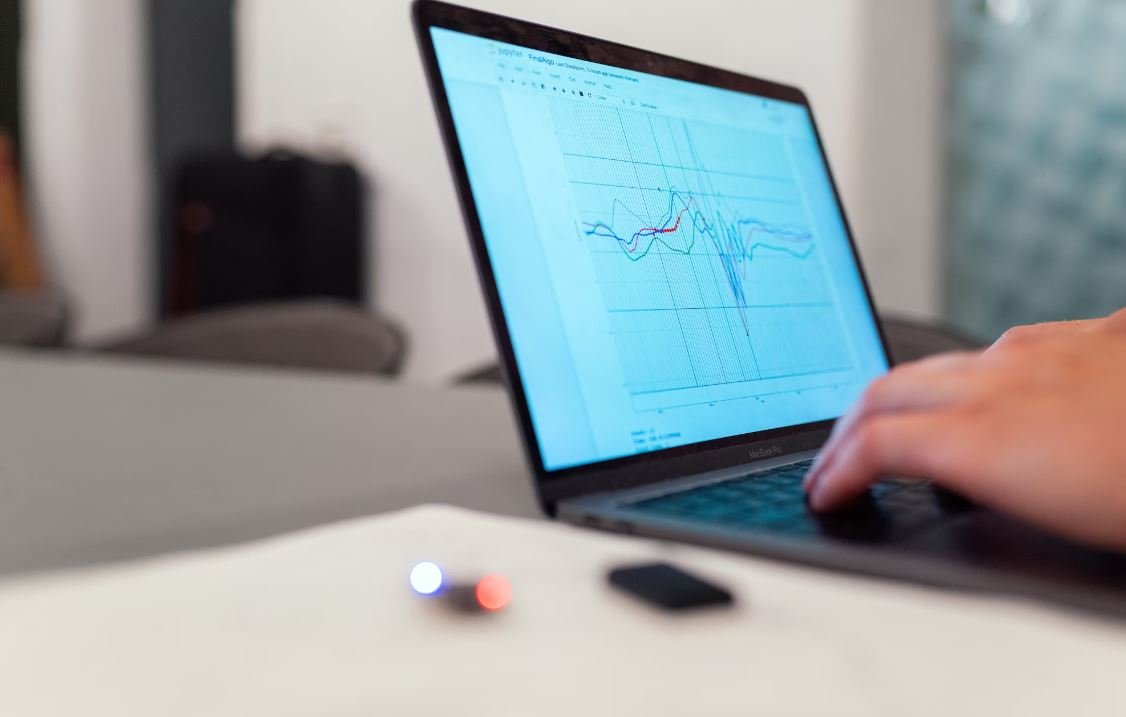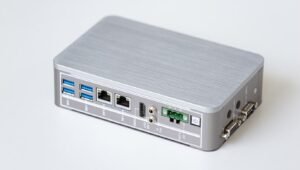Film Versus Digital
Photography has come a long way since its inception, with the advent of digital cameras changing the landscape of the industry. This article explores the pros and cons of shooting with film versus digital, helping photographers make an informed decision about which platform suits their needs.
Key Takeaways
- Film and digital cameras have distinct characteristics and offer unique benefits.
- Film photography provides a nostalgic and artistic appeal, while digital photography offers convenience and flexibility.
- The cost of film, development, and maintenance can be higher in the long run compared to digital cameras.
- Digital cameras allow for instant feedback, immediate editing, and easy sharing of photographs.
- Both film and digital cameras have their place in the world of photography, and the choice depends on personal preference and intended use.
Film photography has a rich history and a unique quality that digital cameras strive to emulate. The process of shooting on film involves capturing images on light-sensitive film negatives, which are then developed in a darkroom or by a professional lab. Film photography evokes a sense of nostalgia and produces a distinct look that cannot be replicated by digital technologies. *Film enthusiasts enjoy the tactile experience of shooting with physical film and appreciate the surprise element of not seeing the results immediately.*
Digital photography, on the other hand, has revolutionized the way images are captured and shared. Digital cameras use electronic sensors to capture light, and the resulting images are stored digitally. This allows for instant feedback, immediate editing, and easy sharing on social media platforms. *With digital cameras, photographers have the ability to review and delete photos on the spot, saving time and storage space.*
Comparing Film and Digital Photography
| Film Photography | Digital Photography | |
|---|---|---|
| Initial investment | Higher cost for film camera and lenses. | Varying costs for different digital camera models. |
| Operating costs | Film rolls, development, and printing costs can accumulate over time. | Minimal ongoing costs apart from equipment maintenance and occasional storage upgrades. |
| Total cost over time | Gradual accumulation of film-related expenses. | Potentially expensive initial investment, but negligible ongoing costs. |
When it comes to cost, *film photography can be more expensive in the long run because of the ongoing expenses associated with film rolls, development, and printing*. On the other hand, *digital photography has higher initial costs due to the need to purchase a digital camera and lenses, but minimal ongoing costs*. It’s important to consider these factors when deciding which platform to invest in.
Pros and Cons
Below are some advantages and disadvantages of film and digital photography:
- Film Photography:
- + Unique and nostalgic aesthetic.
- + High resolution and dynamic range.
- – Limited number of exposures per roll.
- – Costly development and printing process.
- Digital Photography:
- + Instant feedback and editing capabilities.
- + Large number of exposures per memory card.
- – Potential loss of image quality in low-light conditions.
- – Limited dynamic range compared to film.
Conclusion
*Film and digital photography each have their own strengths and weaknesses that cater to different needs and preferences.* What matters most is selecting the medium that aligns with your artistic vision and workflow. Whether you prefer the nostalgic charm of film or the convenience of digital, both options offer creative possibilities in the world of photography.

Common Misconceptions
1. Film is superior to digital
One common misconception is that film is always better than digital when it comes to image quality. While film does have its unique aesthetic appeal, digital technology has come a long way and now offers high-quality images with excellent details and vibrant colors.
- Film can create a nostalgic and timeless look.
- Digital images can be manipulated and enhanced more easily.
- Digital cameras provide instant feedback and allow for immediate adjustments.
2. Digital is easier to use than film
Another misconception is that digital cameras are always easier to use than film cameras. While digital cameras may offer features like autofocus and automatic exposure, mastering the art of digital photography still requires understanding the principles of composition, lighting, and exposure.
- Film cameras can be simpler with fewer settings to navigate.
- Understanding digital camera settings is crucial for achieving desired results.
- Digital post-processing can be time-consuming and complex.
3. Film is obsolete in the digital era
Many people believe that film is outdated and obsolete in the age of digital photography. However, film still holds a special place in the hearts of photographers and continues to be relevant in certain professional and artistic contexts.
- Film allows for an alternative workflow and creative process.
- Film can have a unique and distinct visual character.
- Some photographers prefer the tactile experience of shooting with film.
4. Digital always provides better image resolution
It is a misconception that digital cameras always provide higher resolution than film. While digital cameras can offer high megapixel counts and capture fine details, film still has the potential to deliver extremely high-quality images with excellent resolution.
- Film can capture more details due to the absence of a Bayer filter.
- Large format film can provide unmatched resolution and clarity.
- Scanning film negatives can produce high-resolution digital files.
5. Film is more expensive than digital
Another misconception is that shooting with film is always more expensive than shooting with digital. While film does involve costs such as purchasing and developing film rolls, digital photography also comes with its own expenses, including buying cameras, memory cards, batteries, and computer software.
- Film cameras can be found at affordable prices in the secondhand market.
- Digital cameras require regular upgrades to keep up with technology.
- Professional digital equipment can be more costly than film cameras.

Film Format Comparison: Cost Analysis
One of the key factors to consider when choosing between film and digital format is the cost. This table provides a breakdown of the costs associated with each format, including equipment, film rolls, and processing fees.
| Expense | Film | Digital |
|---|---|---|
| Camera | $500 | $1,200 |
| Film Rolls | $10/roll | N/A |
| Processing | $20/roll | N/A |
| Storage | $50/year | $100/year |
Resolution Comparison: Film vs Digital
When it comes to image resolution, digital cameras have a clear advantage over film. This table highlights the differences in resolution between the two formats.
| Format | Resolution |
|---|---|
| Film | Varies |
| Digital | 20MP |
Dynamic Range: Film vs Digital
Dynamic range refers to the ability of a camera to capture a wide range of tones, from the darkest shadows to the brightest highlights. Film and digital formats differ in their dynamic range capabilities, as shown below.
| Format | Dynamic Range |
|---|---|
| Film | 12 stops |
| Digital | 10 stops |
Development Time: Film vs Digital
The development time required for film and digital images also plays a role in choosing the optimal format for a project. This table compares the time needed for processing and editing.
| Format | Development Time |
|---|---|
| Film | 1-2 days |
| Digital | Instant |
Noise Levels: Film vs Digital
Noise in an image refers to the grain or interference that can affect its overall quality. Film and digital cameras produce different levels of noise, as outlined in the table below.
| Format | Noise Level |
|---|---|
| Film | Low |
| Digital | High |
Longevity: Film vs Digital
The longevity of photographs is an important consideration for archiving purposes. Here’s a comparison of the expected lifespan of film prints and digital files.
| Format | Expected Lifespan |
|---|---|
| Film | 50+ years |
| Digital | 10-20 years |
Artistic Control: Film vs Digital
The artistic control offered by each format can significantly impact the outcome of a photograph. This table explores the various creative adjustments available in film and digital photography.
| Adjustment | Film | Digital |
|---|---|---|
| Exposure | Manual | Manual |
| White Balance | Filters | Post-processing |
| Color Manipulation | Chemical processes | Software tools |
Portability: Film vs Digital
Portability is a factor that can influence the choice between film and digital. This table compares the weight and convenience of each format.
| Format | Weight | Convenience |
|---|---|---|
| Film | Light | Requires storage space |
| Digital | Varies | Instant access, compact memory cards |
Environmental Impact: Film vs Digital
Considering the environmental impact is essential in today’s world. This table highlights the environmental factors associated with film and digital photography.
| Factor | Film | Digital |
|---|---|---|
| Chemical Waste | High | None |
| Battery Usage | None | High |
After comparing the various aspects of film and digital photography, it becomes clear that each format has its advantages and disadvantages. Film offers superior resolution, greater dynamic range, and longer archival life. On the other hand, digital photography provides instant feedback, easy editing, and more portability. Ultimately, the choice between film and digital depends on the specific needs and preferences of the photographer or filmmaker.
Frequently Asked Questions
What are the main differences between shooting film and shooting digital?
Film and digital have distinct characteristics that impact how images are captured, processed, and stored. Film photography uses chemical processes to capture light and produce an image on a physical film strip, while digital photography utilizes electronic sensors to convert light into digital data. The choice between film and digital ultimately depends on personal preference, desired aesthetics, and practical considerations.
What factors should I consider when deciding between film and digital photography?
Some factors to consider include image quality, cost, convenience, workflow, and artistic control. Film photography often provides a unique and nostalgic aesthetic, while digital photography offers the advantages of immediacy, post-processing flexibility, and lower recurring costs.
Which medium, film or digital, produces better image quality?
Both film and digital photography can produce high-quality images, but they have different inherent characteristics. Film can achieve a unique and organic look with its grain structure, dynamic range, and color rendition. On the other hand, digital cameras can capture more detail, especially in low-light situations, and offer the potential for virtually noise-free images.
Is film photography more expensive than digital photography?
Generally, film photography tends to be more expensive in the long run due to the costs of film rolls, development, and printing. Digital photography does have an upfront equipment cost, but once you own a camera, additional expenses are usually limited to storage media and occasional maintenance.
Can I achieve the same look as film using digital techniques?
With advancements in digital post-processing techniques, it is possible to simulate the look of film to a certain extent. However, complete replication of the unique characteristics of film photography can be challenging. Film’s organic qualities, color rendition, and grain pattern are difficult to replicate perfectly.
Does film photography have advantages in terms of archival longevity?
Film has a long archival life and can be stored for many years under the right conditions. However, digital photography requires careful backup strategies and regular migration of data to ensure long-term accessibility and preservation. Both mediums have their own considerations when it comes to archival longevity.
Are there any technical limitations specific to shooting with film or digital cameras?
Film cameras may have limitations in terms of ISO range, dynamic range, and the number of exposures per roll. Digital cameras, on the other hand, can suffer from issues like sensor noise, limited battery life, and file format compatibility. It is crucial to understand these limitations when choosing between film and digital.
Can I use both film and digital cameras interchangeably for a single project?
Yes, many photographers use both film and digital cameras in their workflow, depending on the project’s requirements and personal preferences. Some photographers enjoy the creative flexibility offered by utilizing different mediums for various scenarios.
Does shooting film require more technical knowledge and skills?
Shooting film can be more technically demanding due to its manual nature. It requires a thorough understanding of exposure, film types, developing processes, and darkroom techniques. Digital cameras offer more automation and real-time feedback, making them more accessible for beginners.
What impact does shooting film or digital have on the environment?
Both film and digital photography have environmental considerations. Film production involves chemicals and consumables, while digital photography relies on electronic equipment that may have a limited lifespan. Proper disposal or recycling of film chemicals and electronic waste is important to minimize environmental impact.




